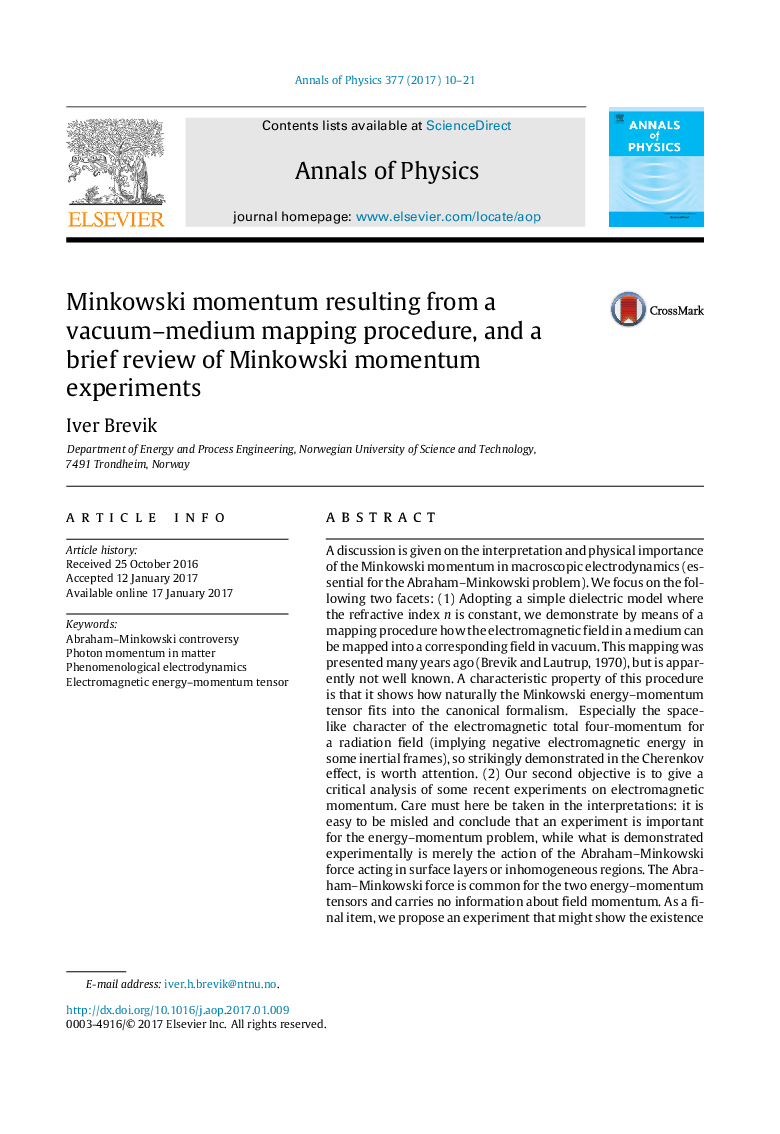| Article ID | Journal | Published Year | Pages | File Type |
|---|---|---|---|---|
| 5495981 | Annals of Physics | 2017 | 12 Pages |
Abstract
A discussion is given on the interpretation and physical importance of the Minkowski momentum in macroscopic electrodynamics (essential for the Abraham-Minkowski problem). We focus on the following two facets: (1) Adopting a simple dielectric model where the refractive index n is constant, we demonstrate by means of a mapping procedure how the electromagnetic field in a medium can be mapped into a corresponding field in vacuum. This mapping was presented many years ago (Brevik and Lautrup, 1970), but is apparently not well known. A characteristic property of this procedure is that it shows how naturally the Minkowski energy-momentum tensor fits into the canonical formalism. Especially the spacelike character of the electromagnetic total four-momentum for a radiation field (implying negative electromagnetic energy in some inertial frames), so strikingly demonstrated in the Cherenkov effect, is worth attention. (2) Our second objective is to give a critical analysis of some recent experiments on electromagnetic momentum. Care must here be taken in the interpretations: it is easy to be misled and conclude that an experiment is important for the energy-momentum problem, while what is demonstrated experimentally is merely the action of the Abraham-Minkowski force acting in surface layers or inhomogeneous regions. The Abraham-Minkowski force is common for the two energy-momentum tensors and carries no information about field momentum. As a final item, we propose an experiment that might show the existence of the Abraham force at high frequencies. This would eventually be a welcome optical analogue to the classic low-frequency 1975 Lahoz-Walker experiment.
Related Topics
Physical Sciences and Engineering
Physics and Astronomy
Physics and Astronomy (General)
Authors
Iver Brevik,
